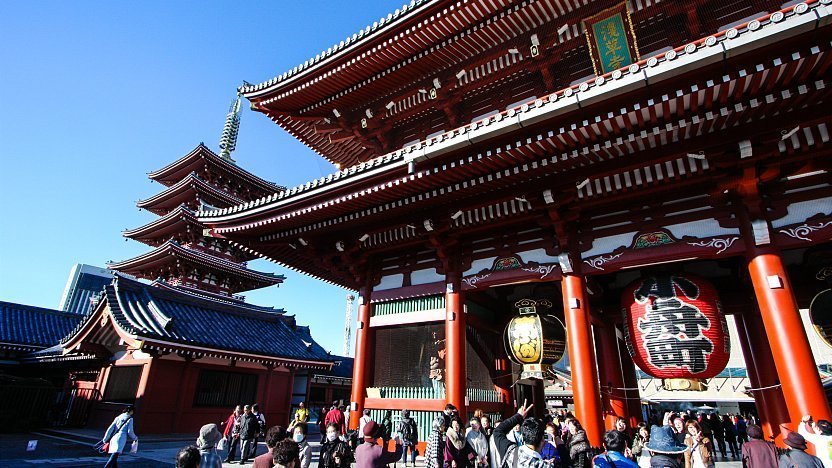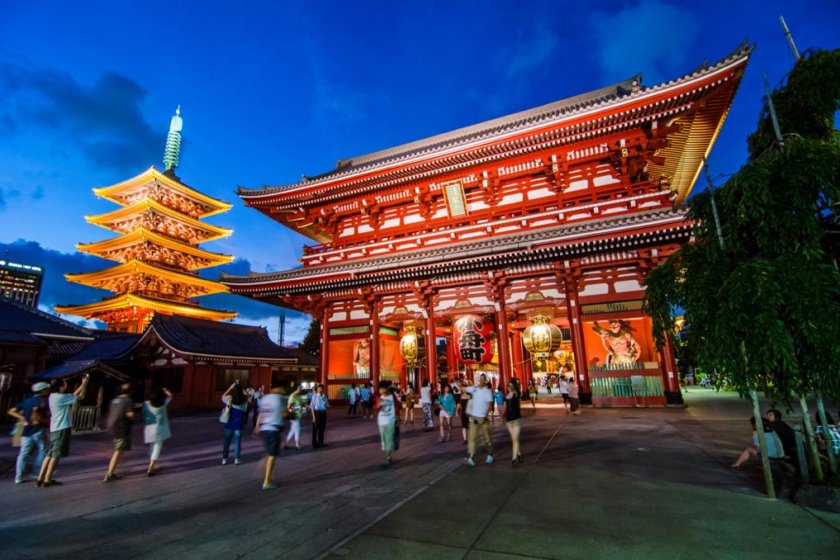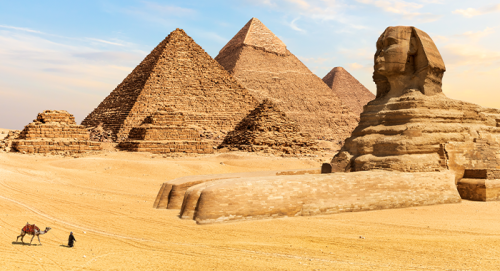Discover the Rich History and Unique Architecture of Senso-ji Temple Tokyo Japan
Exploring Senso-ji Temple-Iran Charter in Tokyo Japan offers a profound journey into one of the most iconic and historic sites in Japan. This ancient temple, located in the heart of Tokyo, embodies centuries of cultural heritage, spiritual significance, and artistic mastery. As the oldest temple in the city, Senso-ji attracts millions of visitors annually who come to admire its stunning architecture, vibrant festivals, and the rich stories that have been passed down through generations. The temple’s impressive structures, including the iconic Kaminarimon Gate, the five-story pagoda, and the main hall, showcase traditional Japanese craftsmanship and spiritual symbolism. Visitors can also experience the lively Nakamise shopping street, lined with traditional shops and food stalls, offering a taste of local culture. Whether you’re interested in history, architecture, or spiritual practices, Senso-ji Temple Tokyo Japan provides an unforgettable experience that connects the past with the present, making it a must-visit destination for travelers seeking to immerse themselves in Japan’s cultural soul.

Discover the Rich History and Legends of Senso-ji Temple Tokyo Japan
Senso-ji Temple in Tokyo Japan stands as the oldest and most revered Buddhist temple in the city, with a history dating back over a millennium. Founded in 628 AD, this historic site has witnessed countless events that have shaped its spiritual and cultural significance. Its legendary origins are intertwined with tales of divine intervention and ancient myths, making it a must-visit destination for travelers seeking to connect with Japan’s rich heritage. Throughout centuries, the temple has undergone numerous reconstructions, each adding layers to its storied past, reflecting resilience and devotion of the Japanese people. Visitors today can explore its sacred grounds, where history and legend blend seamlessly, offering a profound experience rooted in tradition.
Architectural Marvels and Artistic Elements of Senso-ji Temple Tokyo Japan
The architecture of Senso-ji Temple exemplifies traditional Japanese design, showcasing intricate woodwork, vibrant colors, and symbolic motifs. The iconic Kaminarimon Gate, with its massive red lantern and detailed carvings, welcomes visitors into a world of spiritual artistry. Inside, the main hall features elaborate decorations, murals, and statues that embody Buddhist iconography. The use of vivid reds and gold accents symbolizes good fortune and prosperity, while the craftsmanship reflects centuries of artistic mastery. Unique elements such as the pagoda, the incense burners, and the decorative lanterns contribute to the temple’s aesthetic appeal. Every detail in the architecture and art serves to inspire reverence and admiration for Japan’s cultural heritage, making Senso-ji a living museum of traditional craftsmanship.
Hidden Symbols and Cultural Significance Within Senso-ji Temple Tokyo Japan
Within the sacred precincts of Senso-ji, numerous symbols and rituals reveal deep cultural meanings. The temple’s statues, lanterns, and architectural features are laden with symbolism representing protection, enlightenment, and harmony. For instance, the incense offerings are believed to purify the mind and body, while the Omikuji fortune-telling paper strips provide insights into one’s destiny. The various gates and statues depict protective deities and mythological stories that reinforce spiritual beliefs. Participating in rituals such as ringing the bell or clapping hands signifies respect and connection with the divine. These symbols and practices serve as a bridge between the physical space and spiritual realm, offering visitors a chance to engage with Japan’s profound religious traditions and cultural values.
Practical Guide for Visiting Senso-ji Temple Tokyo Japan: Best Times, Routes, and Tips
To maximize your experience at Senso-ji, plan your visit during early mornings or late afternoons when crowds are thinner. Spring and autumn are ideal seasons, offering pleasant weather and scenic surroundings. The temple is easily accessible via Asakusa Station, with clear signage guiding visitors through nearby shopping streets. Wear comfortable shoes, as exploring the temple grounds involves walking through vibrant markets and historic pathways. Respect local customs by dressing modestly and observing proper etiquette during prayer or rituals. Capture memorable photos of the iconic Kaminarimon Gate, the bustling Nakamise shopping street, and serene temple interiors. With thoughtful planning, your visit will be smooth, meaningful, and enriching, providing a deep connection to Japan’s spiritual heritage.
Spiritual Experiences and Rituals at Senso-ji Temple Tokyo Japan
Visiting Senso-ji offers a unique opportunity to partake in traditional Japanese Buddhist practices. Upon entering, visitors can ring the large bell, clap their hands, and offer prayers at the main hall, seeking blessings and good fortune. Incense burning rituals are performed to purify the mind and body, creating a calming atmosphere. Participating in omikuji fortune-telling or purchasing protective charms (omamori) enhances the spiritual journey. Observing or joining ceremonies during festivals provides deeper insight into Japan’s religious customs. These rituals foster a sense of inner peace and cultural appreciation, making each visit a meaningful spiritual experience that connects visitors with centuries-old traditions.
Exploring the Surroundings of Senso-ji: Nakamise Street, Parks, and Nearby Attractions
After exploring the temple, stroll along Nakamise Street, a lively shopping avenue lined with traditional stalls selling souvenirs, snacks, and crafts. This vibrant marketplace offers a taste of authentic Japanese culture and cuisine. Nearby parks such as Sumida Park provide tranquil spots for relaxation and scenic views of Tokyo Skytree. For a deeper cultural immersion, visit museums, galleries, and tea houses in the vicinity, which showcase contemporary and traditional Japanese arts. Combining the historic charm of Senso-ji with these surrounding attractions creates a well-rounded experience, blending spirituality, history, and modern culture. This area is perfect for leisurely walks, photography, and discovering hidden gems that enrich your understanding of Tokyo’s diverse heritage.
Festivals and Special Events at Senso-ji Temple Tokyo Japan Throughout the Year
Senso-ji hosts numerous festivals that celebrate its spiritual significance and cultural traditions. The annual Sanja Matsuri in May is one of the most famous, featuring lively processions, traditional music, and dance performances that draw large crowds. Seasonal events such as cherry blossom viewing in spring and autumn leaf festivals add to the temple’s festive atmosphere. During these occasions, the temple grounds come alive with colorful decorations, rituals, and community participation. Attending these festivals offers a vibrant insight into Japanese customs and communal spirit. Participating in or observing these events makes your visit memorable, providing a deeper appreciation of the living traditions that continue to thrive around Senso-ji in Tokyo Japan.
Memorable Stories and Experiences Shared by Visitors to Senso-ji Temple Tokyo Japan
Travelers from around the world share heartfelt stories of their journeys to Senso-ji, often describing moments of spiritual awakening and cultural discovery. Many recount feelings of serenity while lighting incense or making wishes at the main hall. Others highlight the lively atmosphere of Nakamise Street, where they found unique souvenirs and tasted traditional treats. Several visitors emphasize the significance of participating in rituals, which deepen their connection to Japanese spirituality. These personal narratives reflect the universal appeal of Senso-ji as a place of reflection, joy, and cultural exchange. Such stories inspire future travelers to experience the profound beauty and history that make Senso-ji a top destination in Tokyo Japan.
The Influence of Senso-ji on Contemporary Japanese Art and Culture
Senso-ji’s iconic architecture and spiritual ambiance continue to inspire modern Japanese art, fashion, and media. Artists incorporate traditional motifs from the temple into paintings, sculptures, and design works, blending old and new aesthetics. The temple’s image appears in films, anime, and literature, symbolizing Tokyo’s cultural heritage. Many contemporary festivals and events draw inspiration from the traditions rooted in Senso-ji, keeping its legacy alive in modern society. This ongoing influence underscores the temple’s role as a cultural icon that bridges Japan’s historic past with its vibrant present, shaping artistic expression and cultural identity across generations.

Frequently Asked Questions
- What is the historical significance of Senso-ji Temple?
- Senso-ji Temple, established in 628 AD, is Tokyo’s oldest Buddhist temple. It holds a deep cultural and spiritual importance, symbolizing resilience and devotion through centuries of reconstruction and tradition. Its legendary origins involve divine intervention and ancient myths, making it a key site for understanding Japan’s rich heritage.
- Where is Senso-ji Temple located?
- The temple is situated in the Asakusa district of Tokyo, easily accessible via Asakusa Station. It is surrounded by vibrant shopping streets and nearby parks, offering visitors a blend of spiritual and cultural experiences.
- What are the main architectural features of Senso-ji?
- The temple showcases traditional Japanese architecture, including the iconic Kaminarimon Gate with its massive red lantern, intricate woodwork, vibrant colors, and symbolic motifs. Inside, the main hall features murals, statues, and elaborate decorations that reflect Buddhist artistry.
- What symbols and cultural practices are associated with Senso-ji?
- Symbols like lanterns, statues, and gates represent protection and enlightenment. Rituals such as incense burning, ringing bells, and drawing omikuji fortune slips are common practices that connect visitors with spiritual traditions and cultural values.
- When is the best time to visit Senso-ji?
- Early mornings or late afternoons are ideal to avoid crowds. Spring and autumn offer pleasant weather and scenic views. Major festivals like Sanja Matsuri in May and cherry blossom seasons enhance the experience.
- What spiritual activities can visitors participate in?
- Visitors can ring the temple bell, clap their hands, offer prayers, burn incense, and purchase charms (omamori). Participating in these rituals fosters inner peace and a deeper connection to Japanese spiritual traditions.
- What attractions are nearby Senso-ji?
- Nakamise Street, lined with traditional stalls, offers souvenirs and snacks. Nearby parks like Sumida Park provide scenic views of Tokyo Skytree. Museums, galleries, and tea houses enrich the cultural experience.
- Are there any festivals held at Senso-ji?
- Yes, the Sanja Matsuri in May is the most famous, featuring processions and traditional performances. Seasonal events like cherry blossom viewing and autumn leaf festivals also take place, celebrating Japan’s cultural heritage.
- What are some memorable visitor experiences?
- Many visitors share stories of spiritual awakening, enjoying the lively atmosphere of Nakamise Street, and participating in rituals. Lighting incense and making wishes create lasting memories of cultural connection.
- How does Senso-ji influence modern Japanese art and culture?
- The temple’s motifs inspire contemporary art, fashion, and media. Its iconic imagery appears in films, anime, and literature, symbolizing Tokyo’s cultural identity and bridging traditional and modern aesthetics.
- Is there any practical advice for visitors?
- Plan visits during less crowded times, wear comfortable shoes, dress modestly, and respect local customs. Capture photos of the Kaminarimon Gate and Nakamise Street, and explore nearby attractions for a full experience.
- Can I participate in festivals or special events?
- Absolutely. Attending festivals like Sanja Matsuri or seasonal celebrations provides a deeper understanding of Japanese traditions and community spirit, making your visit more meaningful.
- What stories do visitors commonly share about Senso-ji?
- Travelers often describe feelings of serenity, joy from discovering souvenirs, and spiritual moments during rituals. These stories highlight the temple’s role as a place of reflection and cultural exchange.
- How has Senso-ji influenced contemporary Japanese culture?
- Its architecture and spiritual ambiance inspire modern art, fashion, and media. The temple’s symbols are integrated into various cultural expressions, maintaining its legacy as a cultural icon that connects Japan’s past with present.
- What is the significance of the Omikuji fortune slips?
- Omikuji are paper strips that reveal fortunes. They are believed to predict one’s future and offer guidance. Many visitors tie their slips to designated areas as a ritual for good luck or to ward off bad luck.

























